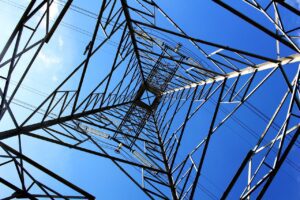
Ukraine has refused to buy electricity from the Belarusian nuclear power plant (NPP), Lithuanian Prime Minister Ingrida Šimonytė said following talks with Ukrainian Prime Minister Denys Shmyhal in Vilnius on Thursday.
At a joint press conference, she welcomed Ukraine’s withdrawal from dangerous suppliers and its desire to join the European ENTSO-E electricity market.
According to her, the “green” transition is also important.

The Pivdenny Economic Court of Appeals has postponed the hearing of a case regarding the Nikopol Ferroalloy Plant (NFP) shutdown of TIU Canada’s solar power plant in Nikopol to July 27 due to the absence of one of the defendants, the Canadian company said in a press release on Thursday.
In addition, according to TIU Canada, one of the judges withdrew from the case on the morning of June 24 and was replaced, which was the next stage after the previous three judges recused themselves.
As reported, earlier the company had previously filed a motion to dismiss three judges of Pivdenny Economic Court of Appeals from the hearing the case “because of warnings about the connection between the latter and oligarch Ihor Kolomoisky, who is included in the list of persons subject to U.S. government sanctions.”
TIU Canada argued its distrust by the fact that judges Korsak, Popikova and Yevsikov, whose challenge the company is seeking, had previously ruled in favor of businessman Ihor Kolomoisky, who controls NFP, in the case against the state-owned PrivatBank, admitting that they would not be able to consider the case related to this enterprise without bias.
The 10.5 MW solar power plant was disconnected from the power grid by NFP in March 2020. TIU Canada said that NFP took advantage of the fact that the SPP was connected to a substation located on its territory, and explained the need for disconnection by repair work. The shutdown caused the company in excess of EUR1.5 million losses, which continue to grow.
As a result, Ekotekhnik Nikopol LLC (TIU Canada) filed a claim against NFP with the Kyiv Economic Court. In the middle of February, the company said it would challenge a January 26 court ruling that rejected the company’s claims against NFP.

Electricity consumption in Ukraine, taking into account in-process losses in power grids, increased by 6.7% in January-May 2021 (by 4.163 billion kWh) compared to the same period in 2020, to 65.913 billion kWh, according to data from the Energy Ministry.
According to the calculations of Interfax-Ukraine, excluding in-process losses, electricity consumption for the specified period increased by 8.2% (by 4.073 billion kWh), to 53.761 billion kWh.
The country’s industry, excluding in-process losses, boosted electricity consumption by 7.3%, to 21.709 billion kWh. In particular, metallurgical industry consumed 11.853 billion kWh (4.6% more compared to January-May 2020), the fuel industry some 1.397 billion kWh (3.9% more), machine-building industry some 1.612 billion kWh (18.7% more), chemical and petrochemical some 1.83 billion kWh (12.1% more), food and processing some 1.746 billion kWh (1% more), building materials some 1.025 billion kWh (22.5% more), others some 2.247 billion kWh (12.4% more).
In addition, agricultural enterprises consumed 1.445 billion kWh (0.9% more), transport some 2.619 million kWh (8.2% more), construction some 501.1 million kWh (23.8% more).
In January-May 2021, the country’s population consumed 17.469 billion kWh (7.5% more), households some 6.384 billion kWh (8.1% more), other non-industrial consumers some 3.635 billion (18.8% more).
According to the results of the first five months, the share of industry in the total volume of electricity consumption decreased from 40.7% to 40.4%, while the share of the population increased from 32.7% to 32.5%.
In May 2021, electricity consumption, taking into account in-process losses, increased by 3.1% (by 338 million kWh) compared to the same month of 2020, to 11.183 billion kWh, excluding in-process losses, by 9.6% (by 848.8 million kWh), to 9.713 billion kWh.

Ukraine in January-May 2021 reduced electricity exports by 44.5% (by 1.172 billion kWh) compared to the same period in 2020, to 1.403 billion kWh, according to data from Ukrenergo.
According to the calculations of the Interfax-Ukraine agency, in particular, supplies from the Burshtyn TPP energy island in the direction of Hungary, Slovakia and Romania fell by 1.8 times (by 769.8 million kWh), to 1.002 billion 2 kWh.
Electricity supplies to Poland almost halved (by 318.3 million kWh) compared to the same period last year, to 353.3 million kWh.
Electricity exports to Moldova decreased by 2.8 times (by 83.4 million kWh), to 46.8 million kWh.
There were no deliveries to Belarus and the Russian Federation in January-May 2021 and 2020.
In May 2021, Ukrainian electricity exports amounted to 125.1 million kWh, which is 3.7 times more than in May 2020 (460 million kWh).
In addition, Ukraine in January-May 2021 reduced electricity imports by 1.8 times (by 756 million kWh) compared to the same period last year, to 981.7 million kWh. In particular, supplies from Belarus amounted to 522.6 million kWh, Slovakia – 254.4 million kWh, Russia – 101.9 million kWh, Hungary – 66.2 million kWh, Romania – 36.6 million kWh.
As reported, in 2020 Ukraine reduced electricity exports by 26.5% (by 1.715 billion kWh) compared to 2019, to 4.754 billion kWh. Electricity export revenue decreased by 25.9% (by $97.937 million), to $280.831 million.

The European Bank for Reconstruction and Development (EBRD) will provide a EUR 10 million two-year committed local currency-denominated working capital loan to the Ukrainian electricity and gas supplier ERU Trading LLC.
As stated in a report of the bank, the decision was made by the board of directors on June 9.
“EBRD funds will be used to support growing gas trading operations of ERU Trading in order to secure low cost gas from EU during summer season and store it in Ukrainian gas storages with further sale in Ukraine,” the EBRD said.
According to EBRD, the proposed project supports a private, independent trader in competing with the dominant player, Naftogaz, in an increasingly liberalised market, and facilitates increased liquidity and competition on the private energy exchange UEEX following the MoU signed by the EBRD in July 2020.
The EBRD will become the first international financial institution in the existing loan portfolio of ERU Trading.
ERU Trading LLC, established in 2016, belongs to Yaroslav Mudry and Dale Perry. According to the information on the company’s website, gas supplies to the population are an important part of its strategy. In February of this year, the company received the license from the energy regulator.
EBRD, ELECTRICITY, GAS, LOAN